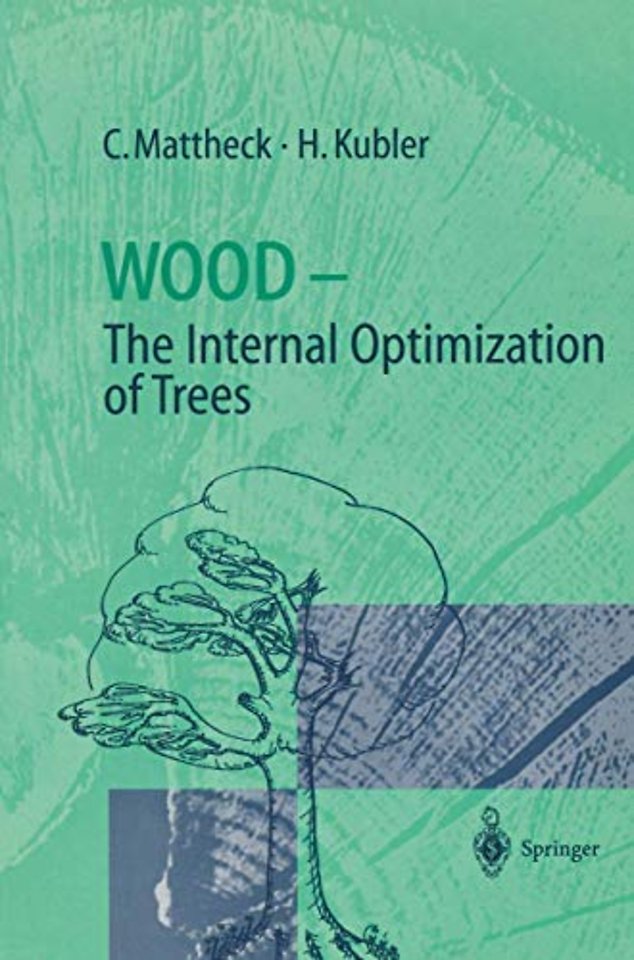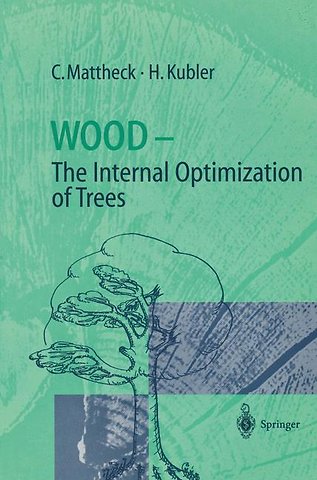Wood
The Internal Optimization of Trees
Paperback Engels 1997 1e druk 9783540620198Samenvatting
Here are two physicists looking over the fence of physics, getting thrilled by the life and growth of trees, taking an altogether different, exciting view of wood: trees produce wood for their own benefit. They do not live for the benefit of man who builds his world using wood as a raw material.
Timber is revealed in a different light, and the reader is taught to stop thinking of it in terms of defective beams and boards. Wood only fails as a part of the living tree. To us, the tree and wood biologists, this new definition is a real, inspiring challenge, which is just what Kubler and Mattheck intended it to be.
Their answers may seem too simple or little logical to some of us; but the authors are not at a loss for sound and solid arguments. Their field studies prove the incredible, their hypotheses makes us want to get to the bottom of the un proven unbelievable. The authors' answers and arguments are bold and cour ageous.
They arouse our curiosity and force us to fathom the facts. It seems as if Kubler and Mattheck wanted to trick us into believing that trees only live and react following mechanical rules and strategies. To tell the truth, that was what I first suspected the authors of: but I was wrong.
Specificaties
Lezersrecensies
Inhoudsopgave
2 Mechanical Fundamentals.
2.1 External Loading and Internal Stresses.
2.2 Thermal Expansion and Thermal Stresses.
2.3 The Finite-Element Method (FEM).
2.4 Notches and Notch Stresses — The Component Killers.
2.5 Crack Propagation.
2.6 The Main Mechanical Aspects.
3 The Mechanical Self-Optimization of Trees — Five Theorems.
3.1 The Five Theorems.
4 The Principle of Minimum Lever Arms.
4.1 Negative Gravitropism.
4.2 The Flexibility Strategy.
5 The Axiom of Uniform Stress.
5.1 The Undisturbed Design.
5.2 Repair Growth.
5.3 Computer-Aided Optimization — CAO.
6 Parallel Fiber and Force Flow Arrangement.
6.1 The Principal Stress Trajectories are Shear-Free Lines.
6.2 Computer-Aided Internal Optimization — CAIO.
6.3 Spindle Shapes — Advantages and Problems.
6.4 Fiber Deviations.
6.4.1 Mechanically Controlled Spiral Grain.
6.4.2 Genetically Programmed Spiral Grain.
6.4.3 The Risks of Spiral Grain.
7 Tree Rings and Force Flow.
7.1 Longitudinal Tree Ring Arrangement.
7.2 Tangential Tree Ring Arrangement.
8 Growth Stresses.
8.1 Qualitative Description.
8.2 Longitudinal Stresses.
8.3 Lateral Stresses.
8.4 Selected Techniques for Measuring Growth Stresses.
8.4.1 Visual Evaluation.
8.4.2 Measurement of Growth Stresses with an Increment Borer.
8.4.3 Growth Stress Measurement with Prismatic Samples.
8.4.4 Growth Stress Measurement Between Two Pocket Holes.
8.4.5 Single-Hole Growth Stress Measurement.
8.4.6 Tangential Growth Stress Measurement on Radial Saw Cuts.
9 Stress-Controlled Strength Distribution.
9.1 The Wood-Concrete Analogy.
9.2 Radial Transverse Strengths and Hazard Beams.
9.3 Tangential Transverse Strengths in Leaning Trees.
9.4 Strengths in the Residual Walls of Hollow Trees.
10 Cracks.
10.1 Frost Cracks.
10.2 Shear Cracks.
10.3 Enclosed Bark.
10.4 Hazard Beams.
10.5 Ring Shakes.
10.6 Grown Cracks on the Upper Sides of Branch Joints.
10.7 T-Cracks.
10.8 Drought Cracks.
11 Final Remarks — Review and Outlook.
Reference.
Vaak samen gekocht
Anderen die dit boek kochten, kochten ook
Rubrieken
- advisering
- algemeen management
- coaching en trainen
- communicatie en media
- economie
- financieel management
- inkoop en logistiek
- internet en social media
- it-management / ict
- juridisch
- leiderschap
- marketing
- mens en maatschappij
- non-profit
- ondernemen
- organisatiekunde
- personal finance
- personeelsmanagement
- persoonlijke effectiviteit
- projectmanagement
- psychologie
- reclame en verkoop
- strategisch management
- verandermanagement
- werk en loopbaan









